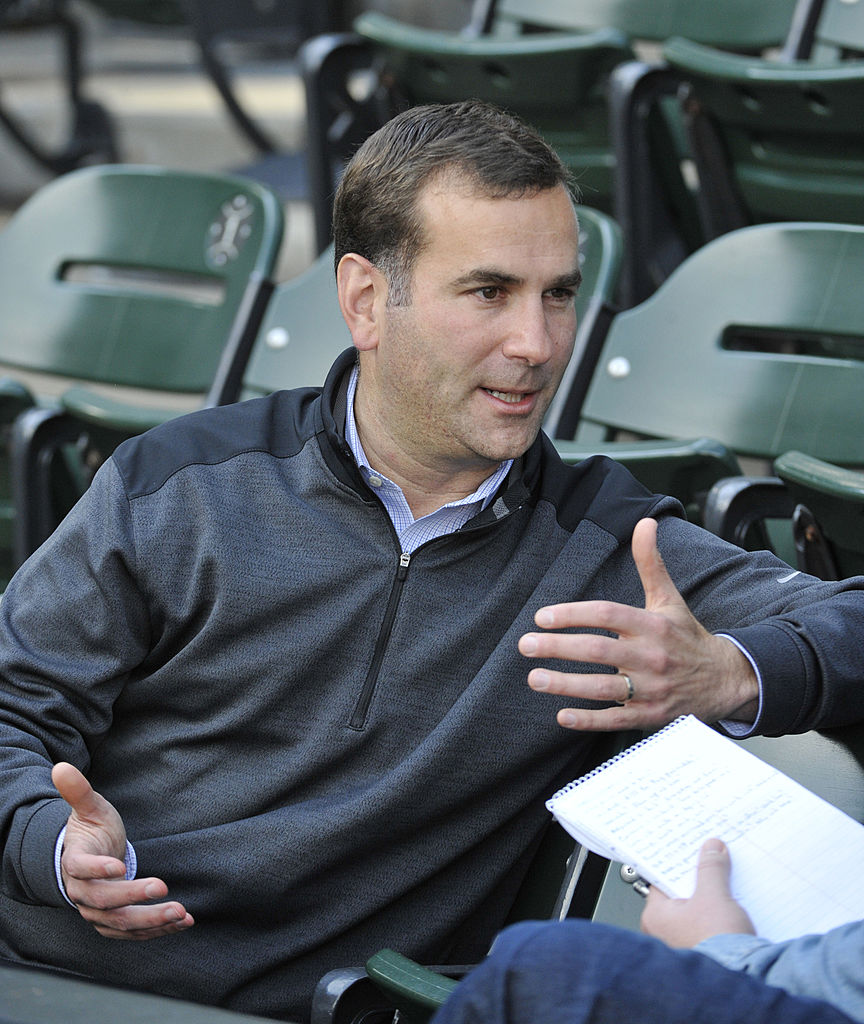The New York Yankees have acquired third baseman Todd Frazier, along with relievers David Robertson and Tommy Kahnle, from the Chicago White Sox.
Chicago is making a statement that they are aiming at 2019 and beyond to compete for the American League Central division crown.
The White Sox received outfielder Blake Rutherford, who was New York’s 2016 first-round pick. They also got left-handed pitching prospect Ian Clarkin, minor league outfielder Tito Polo and reliever Tyler Clippard, whose contract helps offset some of the money in Frazier’s and Robertson’s deals. Clippard is in the second year of a two-year, $12.25 million deal.
Whenever you trade three solid contributors from your major-league team in a single deal, you expect to get something worthwhile in return. Single-A outfielder Blake Rutherford acts as the centerpiece of the return for Chicago. The Yankees’ first-round pick two years ago, Rutherford was an older high school draftee now playing in Low-A at age 20.
[youtube https://www.youtube.com/watch?v=bHNliO-7NGs]The first thing you notice about Rutherford at the plate is his smooth swing that can spray the ball to all areas of the field. He has a compact stroke, little noise, and loose hands that can adjust the barrel for consistent line-drive contact. His approach is also well advanced for his age. He’s comfortable swinging at the first pitch if it’s in his hit zone or taking pitchers deep into counts when he needs to. He remains steady at the plate, letting the ball travel and just seeing and hitting the ball where it’s pitched. He does swing over off-speed stuff at times and his lack of unique physicality will keep his hit tool from getting to plus, but he projects as an above-average pure hitter.
[youtube https://www.youtube.com/watch?v=pgePROFRtq0]Defensively, Rutherford has played in right field most of this season, but he’s going to profile in a corner as he grows into his fairly projectable frame. He flashes pretty much average in terms of speed, arm, and glove, which will make him a more than workable option there. That’s not to say he can’t play center in a pickle, but he just doesn’t have the plus athleticism to be more than a fringe option.
However, what’s really going to define whether Rutherford is simply a solid regular or something more will be the development of his power stroke. At the moment, Rutherford is a little skinny at 6-foot-3 and 195 pounds, which is to be expected for a tall and lean high school draft pick in his first year of full-season ball. He should be able to add a bit of muscle to his upper body, which will help his raw power get to plus at maturity. But when watching Rutherford, it’s clear that he’d rather play to a more gap-driven approach than pull the pitches he needs to fully translate his raw potential into game situations. I actually think this will benefit him as his swing plays more to contact than power, which is something that he probably recognizes when just watching him work the zone at 20.
Overall, Rutherford doesn’t flash with “wow” ability in any one area like some of the other top outfield prospects. He’s a safer prospect for a high school outfielder given the relative lack of holes in his game, but I’m more likely to peg him as a solid MLB regular than an All-Star due to his inability to really grow into a plus tool. Nevertheless, he’s certainly a welcomed addition to an already loaded White Sox farm system and works as the main prize of this particular trade package.
While he has been sidelined with injuries, including various elbow and forearm strains, Clarkin still has some stuff to like. His fastball, while not plus anymore, is 89-91 and is a tough pitch to square up when located down in the zone. His command this year has been better than in the past, but still needs some projection to stick as a starter. The main attraction with Clarkin is his plus curve which comes in from 73-76 with quality depth and sharp break. He has confidence in it and uses it as his put-away pitch versus righties and lefties. With his changeup projecting to a below-average offering, Clarkin looks more and more like a seventh-inning bullpen arm, but has the floor of a situational lefty.
[youtube https://www.youtube.com/watch?v=M3hvdUEXQ3E]Polo’s best attributes are his plus speed and his knack for making contact. His aggression and lack of pitch recognition are causes for concern, but he’s made it work thus far. He has quick hands and above-average bat speed to help make up for those deficiencies, and looks like an average hitter. The rest of Polo’s game is below average, as he doesn’t offer much in-game power and has a poor arm. While he can play center field in a pinch, he is a left fielder who won’t be known for a good FRAA. Polo looks the part of a fourth outfielder who can start for periods at a time.
[youtube https://www.youtube.com/watch?v=qA_UIOTs5J8]Clippard doesn’t exactly scream valuable trade asset, and at first blush it seems odd that he was even included in the deal. For the Yankees it appears to be yet another attempt at managing money to stay under the luxury tax threshold, but he has some value to the White Sox as well. Clippard certainly hasn’t been lighting the world on fire with his 4.95 ERA, 4.87 DRA, and 12 percent walk rate, but with Jose Quintana’s recent departure from the rotation and two key relievers heading to New York, the White Sox are left with a lot of outs to record on a daily basis. Thirty innings from Clippard may not be pretty, but it could be just enough to prevent the team from pushing prospects into the bullpen before they’re ready. It’s also possible that the White Sox could get something in return for Clippard from a contender convinced he can help down the stretch.
Add The Sports Daily to your Google News Feed!
